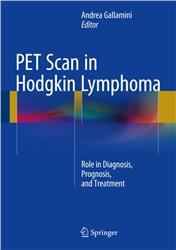Positron Emission Tomography
A Guide for Clinicians
| Auflage | 2015 |
| Seiten | 192 p. 115 illus. |
| Verlag | Springer |
| ISBN | 9788132220978 |
| Artikel-Nr. | 556905 |
Lieferzeit ca. 5 Werktage
Produktbeschreibung
This book provides basic information about the relatively new and evolving technology - positron emission tomography - for its clinical applications and practical guidance for the referring physicians. Chapters cover application of PET in various clinical settings including oncology, cardiology, and neurology with a focus on its role in various cancers. Because most of the new PET equipments come as hybrid machines with CT or MRI, two chapters have been included at the end of the book to provide basic and comprehensive information about these two technologies. Molecular imaging is going to revolutionize the way we practice medicine in the future. It will lead to more accurate diagnosis of diseases and its extent which will lead to better management and better outcomes. PET imaging is mostly used in oncology, neurology and cardiology but also finds application in other situations such as infection imaging. The main focus, of course, is in management of cancer patients. PET (PET-CT) is not only very sensitive as it can detect changes in abnormal biochemical processes at cellular level but in one go all such areas can be detected in a whole body scan. It can show response to therapy, eradication of the disease or recurrence during the follow-up period. Some cancers, especially lymphoma or cancers of the head and neck, brain, lung, colon, or prostate, in very early stage may show up more clearly on a PET scan than on a CT scan or an MRI. A PET scan can also measure such vital functions as blood flow, oxygen use, and glucose metabolism, which can help to evaluate the effectiveness of a patient’s treatment plan, allowing the course of care to be adjusted if necessary. Apart from its vital role in oncology it can estimate brain's blood flow and metabolic activity. A PET scan can help finding various nervous system disorders, such as Alzheimer's disease, Parkinson's disease, multiple sclerosis, TIA etc. PET scan is also increasingly being used to find poor blood flow to the heart, which may mean coronary artery disease. It can most accurately estimate the extent of damage to the heart tissue especially after a heart attack and help choose the best treatment, such as coronary artery bypass graft surgery, stenting or medical treatment. PET scan can also contribute significantly in identifying areas exactly where radiotherapy is to be targeted avoiding unnecessary radiation exposure to surrounding tissue.

Bleiben Sie informiert!
Melden Sie sich für den frohberg.de-Newsletter an und nutzen Sie jetzt Ihre Vorteil:- Willkommens-Dankeschön: Beatmungsmaske Rescue Me
- Aktuelle Neuerscheinungen und Empfehlungen
- Exklusive Angebote und Kongress-Highlights






